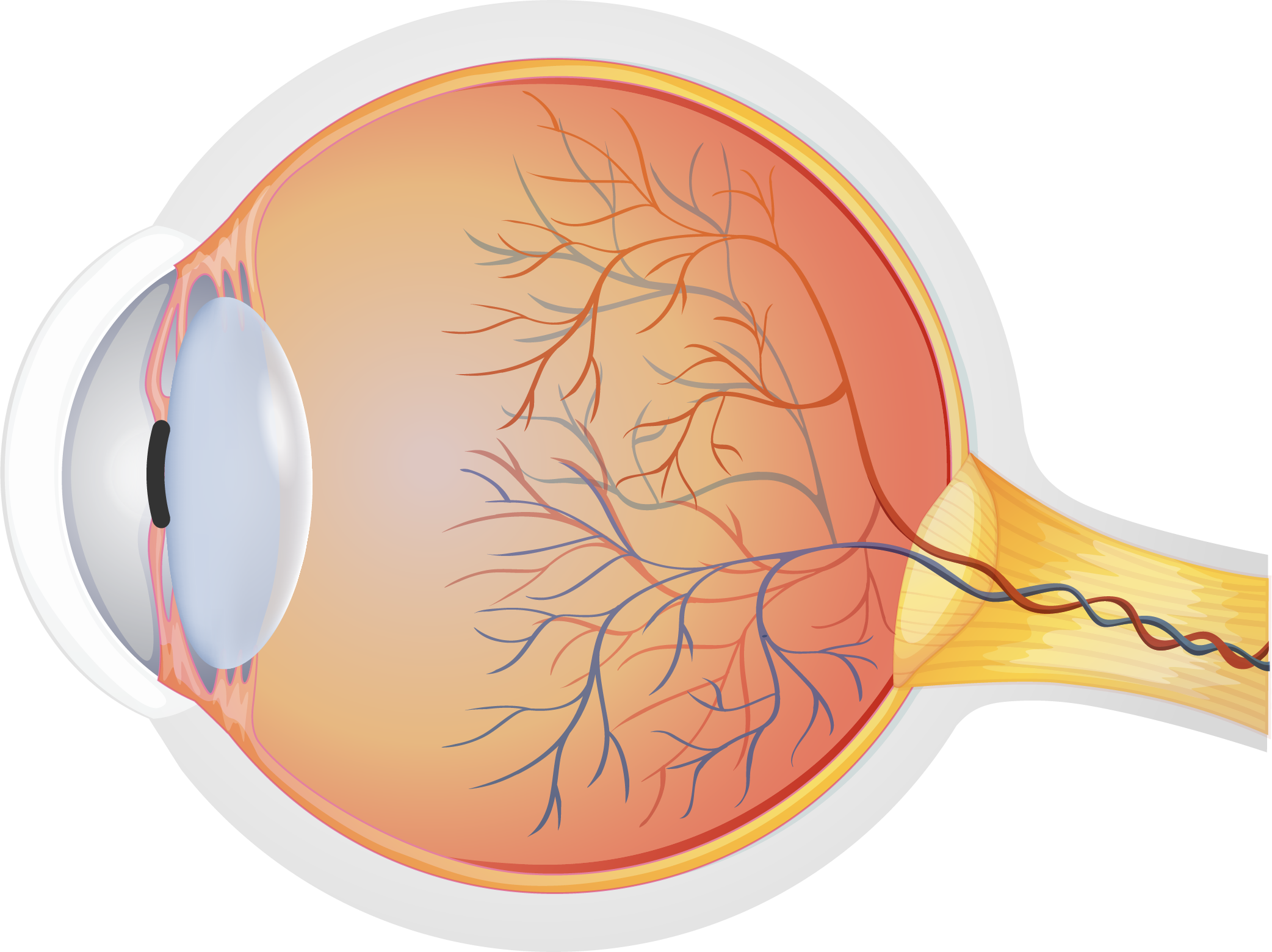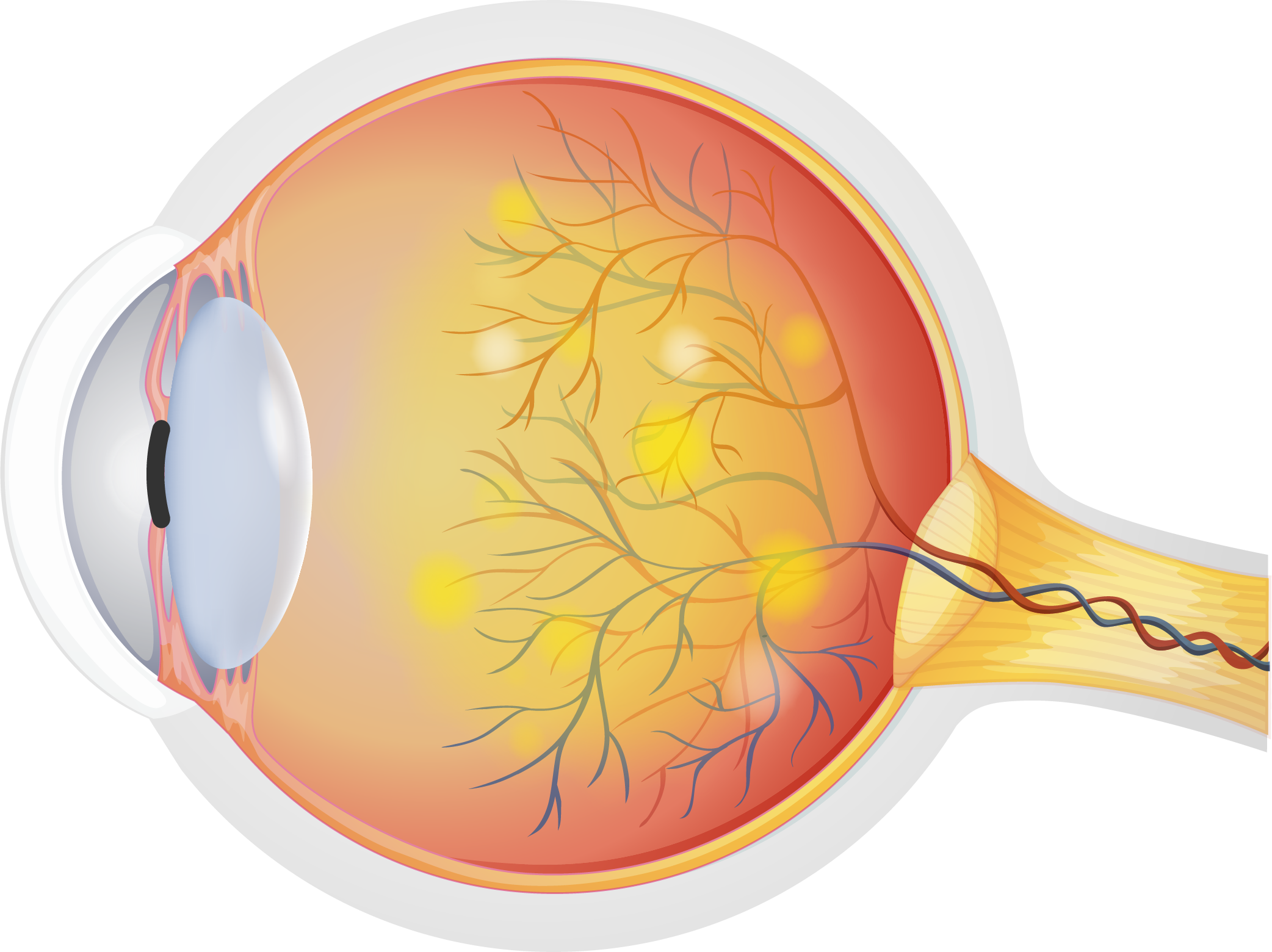Ophthalmological diseases
Here you can discover the most important eye diseases and we will help you to recognise their symptoms and tell you how each condition is treated.
Age-Related Macular Degeneration
What is AMD?
AMD is a hereditary neurodegenerative disease affecting the macula, i.e. the area responsible for ensuring proper vision of objects positioned in front of us. Although the condition tends to be painless, it brings about the death of cells in this part of the eye, leading to a gradual deterioration of central visual acuity and thus the ability to perform actions such as reading, watching television or driving. However, patients with AMD usually retain normal lateral or peripheral vision. Despite the fact that macular degeneration is directly associated with old age and often occurs as a consequence of the person’s natural ageing process, some research suggests that there are other contributing factors. Specifically, it has been found that there may be a genetic component to the disease, as well as associated risk factors such as high blood pressure, obesity or smoking (the latter leading to a 5-fold increase in the likelihood of suffering the disease).
There are two types of AMD, and the patient may have one of them and then the other:
- Dry or atrophic AMD: this is the most common form (approximately 85% of cases) and is caused by a progressive deterioration of the macula, which loses thickness over time, leading to a build-up of deposits or drusen and atrophy of the macular area.
- Wet or exudative AMD: this is a less common variant, but it progresses rapidly and the prognosis is usually more severe. This type of AMD is characterised by the appearance of fragile new blood vessels that bleed and leak easily, thus severely threatening the patient’s vision.

Healthy eye

Age-Related Macular Degeneration
Symptoms
Gradual deterioration of vision over months or years indicates a possible case of AMD. Other symptoms may include:
- Distorted vision and loss of visual acuity
- Reduced contrast sensitivity
- Difficulties distinguishing colours in the red-green spectrum
- Visual field defects
Treatment
Wet AMD can be treated effectively thanks to the development of new antiangiogenic drugs that are injected into the eye (intravitreal injections) to inhibit the formation of new blood vessels. Early detection is very important in wet AMD, as it is very difficult to prevent vision loss once the disease reaches an advanced stage. Therefore, it is essential to treat it at an early stage in order to maintain (and even recover) vision.
There is currently no effective method of treating dry AMD. However, one option that can help slow dry AMD is for the ophthalmologist to prescribe certain antioxidant vitamin supplements that help protect the retina (vitamins C and E, lutein, zeaxanthin, etc.). Studies are currently being carried out to test intravitreal injections of drugs to control the progression of dry AMD in some patients.

